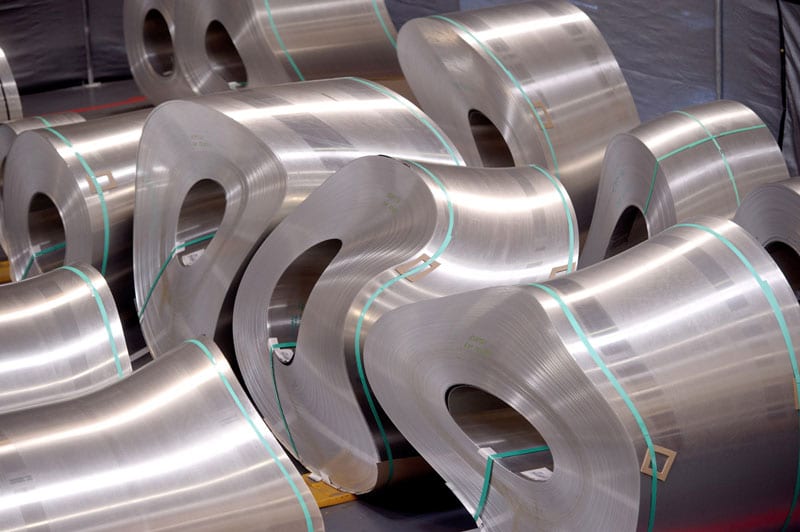How the Commodities Market is Manipulated:
HOW GOLDMAN SACHS AND OTHER BIG BANKS MANIPULATE THE COMMODITIES MARKET
You can get a migraine headache watching CNBC blowhard Jim Cramer for only a few minutes. Not only does the purported stock market expert speak out of both sides of his mouth during the same show, he does so at such a high volume the shingles begin to shake on the side of my home. Once you get past the annoying Cramer shtick, which takes about five years, you are confronted with the reality that this guy works for the big investment houses. Just look at how Cramer tries to explain the 2007-08 financial meltdown.
At least once a week, Cramer tries to play teacher in the “What did we learn from the 2007 financial crisis” class. He mentions the housing bubble, phony derivatives, rampant speculation, and unbridled greed, all of which contributed in some way to the financial implosion. However, Mr. Red Face never discusses the most important reason for the meltdown.
Cramer never mentions Goldman Sachs and the other big banks that manipulated the commodities and equities market.
You never hear Cramer and the other televison financial evangelists discuss the influence that Goldman Sachs had on molding the big banks bailout. Along with Mr. Quantitative Easing, Ben Bernake, Goldman Sachs alumni Hank Paulson and Timothy Geithner orchestrated the biggest financial swindle in United States history. By bailing out banks using the “too big to fail’ mantra, Paulson and Geithner led the effort to steal at least $15 trillion from American taxpayers and who knows how much more the bandits took from Treasury coffers.
This article does not go into the cause of the 2007-08 meltdown, but it discusses, with the introduction of ample evidence, how Goldman Sachs and other big Wall Street Banks manipulate the commodities market. The large banks do not play by the same rules that the political class imposes on people like you and me. As this article proves, the big banks play by the rules created for the few that only benefit the few.
An Overview of Goldman Sachs
We can provide you with the typical Goldman Sachs overview. We can start by writing that Goldman Sachs is an American multinational blah blah blah blah blah.
Forget the conventional description of Goldman Sachs. Let us review the sordid list of Goldman Sachs alumni and their influence on our culture.
- Bradley Abelow-Former Chief of Staff and Treasurer of New Jersey under swindler Jon Corzine, and President of MF Global, Inc.
- Josh Bolton-Former White House Chief of Staff
- Erin Burnett-CNN Host (I thought “journalists” are unbiased)
- Mark Carney-Governor of the Bank of Canada
- Jon Corzine- Former CEO of MF Global, Inc., former Democratic Governor (2006–2010) and U.S. Senator (2001–2006), New Jersey
- Jim Cramer-Yea, that Jim Cramer
- Gary Gensler- Chairman of the U.S. Commodity Futures Trading Commission (2009- )
- Robert Rubin- Former United States Treasury Secretary, ex-Chairman of Citigroup
- Robert Steel – Former Chairman and President, Wachovia
- John Thain – Former Chairman and CEO, Merrill Lynch, and former Chairman of the NYSE
- Robert Zoellick – United States Trade Representative (2001–2005), Deputy Secretary of State (2005–2006), World Bank President (2007-2012)
We can go on and on, but it is suffice to say that Goldman Sachs has some sway in the formation of United State government financial policies and regulations.
The Goldman Sachs Market Manipulation Playbook
Goldman Sachs and other large Wall Street banks must include commodities market manipulation in company employee training programs. Today’s lesson, class, is how Goldman Sachs and other banking behemoths write the laws that the political class is supposed to enforce. In essence, the big banks write the playbook on how to cheat consumers.
Americans may think they have learned how the world’s largest financial institutions make money, but most Americans operate on the faulty premise that the new disclosure laws passed after the 2007 fiasco have made big banks more transparent. Well, how do you explain the network of 27 Detroit warehouses owned by Goldman Sachs that store tons of aluminum for 18 months or more? Instead of getting the aluminum to market for manufacturing purposes, Goldman Sachs houses the gold to collect rent and drive the price up by limiting supply. Who incurs the increased commodities cost? You guessed it, consumers who pay more for aluminum products that include soda and beer cans, as well car parts and accessories. The scam is akin to a grocery store hoarding all of the imported lemons, which forces local lemonade stands to charge more for their homemade beverages.
Doin’ the Goldman Sachs Shuffle
The Curley Shuffle was an historical ode to a comedic legend, but the Goldman Sachs warehouse shuffle is no laughing matter. In 2010, Goldman Sachs bought subsidiary Metro International Trade Services to accumulate over 1.4 million tons of aluminum. The aluminum provides Goldman Sachs with 48 cents per ton for storage every day. In 365 days, the great bank robbers steal nearly half a billion dollars from consumers who pay for the added cost of storing a commodity that possesses high demand.
Anyone who has half a deductive brain sees that Goldman Sachs is hardly the only big bank to play the commodities manipulation game. JP Morgan, the big bank that has looted America since the creation of the Federal Reserve System, does a fine job of playing the warehouse shuffle, albeit with other commodities. The warehouse shuffle has become so popular among big banks that a team of board game creators is currently developing the rules for a Monopoly spin off called “The Warehouse Shuffle.’
Goldman Sachs, in another display of wanton disrespect for the political class, flaunts the warehouse shuffle because the political class refuses to make it illegal. When you have a government controlled by Goldman Sachs cronies, you can expect a lack of oversight to permeate the Halls of Congress. How can we expect oversight laws, much less the enforcement of the laws, to come from a government ruled by the banking elite?
We cannot expect to get any legal help from across the pond. The London Metal Exchange (LME), you know, the British commodities governing body controlled by Goldman Sachs, refuses to clamp down on the practice of large banks hoarding commodities. LME gets a one percent cut of all warehouse rental fees throughout the world. At least the exchange admits its role in the scam. In America, politicians cut back room deals with the banking elite and then hold out their palms for greasing.
We can never expect the Federal Reserve banks and Congress to clamp down on the warehouse shuffle. After all, both institutions loosened restrictions during the 1990s that prevented big banks from being involved with the management of physical commodities. When you have Goldman Sachs alumni penetrating congress, 1600 Pennsylvania Avenue, and the board rooms of the largest banks in the world, all we can do is look at each other and scream in unison, “WE’RE SCREWED!”
Playing the Funny Money Game
The commodity supply bottlenecks created by the big banks only represents the tip of the financial iceberg. Anyone familiar with the bank bailout understands how Goldman Sachs and its gang of looting big banks ripped trillions of dollars from millions of American pockets. Big Banks play the key role in financing the commodities market. Investment bankers at the largest financial institutions treat physical commodities as purely financial assets to trade, rather than as real assets required to grow the economy.
We know the original intent in the trading of commodities and commodity derivatives turned into something quite different once big banks realized they could use the assets as inflation hedges. The new game plan changed the financial markets. Nearly a 10 to 1 ratio exists between the amount of money invested in commodity investment funds and the amount of money invested in equity funds. The accelerated growth of commodity investment funds has given large banks such as Goldman Sachs more leverage in dictating asset prices and more influence in determining commodity price volatility.
Goldman Sachs, along with other big banks, discovered that by combining the control of physical commodities and dominating the derivatives and futures markets, they had all of the tools to manipulate every mechanism in the global financial system. The control of physical commodities allows Goldman Sachs to influence commodity prices that ultimately determine derivative pricing. Bankers have devised a nifty strategy, one that as we shall see at the end of this article, used to be illegal. Some financial observers (not Jim Cramer) have commented that big bank involvement in the warehouse shuffle conceals supply information
It seems the big wigs at Goldman Sachs earned their educations by watching the film Trading Places.
The manipulation of the commodities market derives from gaining a dominate position in the derivatives market and gaining a dominant position in controlling the flow of physical commodities. Government regulators and Congress must establish unequivocal guidelines for preventing the manipulation of the physical commodities market. As we stand today, banking regulators do not perceive ensuring the integrity of commodity markets as part of their purview. The Commodities Future Trading Commission regulates commodity derivative markets, but the agency does not regulate the trading of physical commodities. The Securities and Exchange Commission regulates securities markets, but the agency stays clear of commodity markets.
What we have here is a failure to communicate.
The Goldman Sachs Propaganda Machine
If controlling the puppets in Washington was not enough power, Goldman Sachs utilises a time-tested tactic to dispense its propaganda. You see, Goldman Sachs and the rest of Wall Street want us to believe they are the good guys hounded by unscrupulous government watchdogs. Unfortunately, the watchdogs have eaten one too many dog biscuits.
Here are some highlights of a recent Goldman Sachs explanation of the company’s commodities manipulation, as described on its website.
“As part of our activities as a market maker, or intermediary between buyers or sellers, in commodities and commodity futures and derivatives, Goldman Sachs, like a number of other financial institutions, holds physical commodities in inventory.”
Tell us something we do not know.
“We hold an inventory position in a particular physical commodity for the purposes of meeting the needs of our clients or as a hedge for positions in commodity futures or derivatives we assume as a market maker.”
You hold aluminum for over 18 months to make a huge profit off the limited supply.
“Recent news reports have inaccurately accused Metro of deliberately creating aluminum shortages and incorrectly asserted that Metro moves aluminum from one warehouse to another in order to earn more rent fees.”
No, news reports, and there are several, accurately reported that Goldman Sachs moves aluminum among 27 warehouses with the intent to earn rental fees and profit from increased prices. Sources from the Wall Street journal and Forbes magazine have documented your little scheme, not some conspiracy website that you can easily dismiss as fringe lunacy. Moreover, many of the journalists who cover stories for both publications have close ties to higher ups in your company and other big investment banks, such as JP Morgan.
“We also hold other physical commodity operations as investments. This includes Metro International Trade Services, a metal warehousing company we bought in 2010, and which operates under the regulations of the London Metals Exchange (LME).”
That is interesting, since you operate the warehouses on American soil. What does the LME have anything to do with your aluminum hostage scam?
“LME aluminum inventories more than tripled from 1.2 million tonnes pre-crisis to more than 4.5 million tonnes by the middle of 2009. As a result, large amounts of metal accumulated at some locations.”
The propaganda piece includes a healthy dose of Orwellian Doublespeak, with the objective to confuse as many people as possible. The strategy appears to be working.
When will it End?
By now, you should at least have the outline of a very ugly painting that depicts Goldman Sachs and other big banks participating in blatant commodity manipulation. The large investment houses also manipulate phony securities used to hedge against losses in the investment of physical commodities. However, you have to wonder how long Americans and Canadians plan to tolerate the ostensible pillaging of their respective countries.
There may be a light at the end of the tunnel, but no one seems to know if it is a beacon of hope or a roaring Goldman Sachs train headed for disaster.
Whether Goldman Sachs banker Rajiv Gupta represents the fall guy for the financial meltdown remains unclear, but he seems likely to serve prison time for playing the lead role in handpicking the most toxic United States mortgages. After he chose the toxic assets, he sold them to third parties knowing full well the housing crash was imminent. The indictment states both Gupta and Goldman Sachs misled European banks into believing the toxic mortgages possessed value. The charges also include knowingly defrauding client investors.
This should not surprise anyone who has followed the Goldman Sachs warehouse shuffle. For the past 100 years Goldman Sachs has teamed with the houses of Rothschild, Morgan, Rockefeller, and Warburg to loot the American and Canadian industrial base by profiting from manic boom and bust cycles caused by fiat currency. Insiders at Citibank, Chase Manhattan, Lehman, and Merrill Lynch received huge bailouts just before the 1929 crash. American outrage led to the passing of the Glass-Steagal Act, which President Bill Clinton repealed in 1995, after consulting with Goldman Sachs alum Robert Rubin.
In April of 2011, the Senate Permanent subcommittee on Investigations (that is a really big name for a committee that has no teeth) released an extensive report that described the role of the big banks during the subprime market and equities crash. Over 40 percent of the report’s 640 pages discussed the deceptive practices Goldman Sachs implemented in dealing mortgage-backed securities and collateralized debt obligations. The report further charged Goldman Sachs with bilking investor clients by selling them worthless securities that the company bet against by selling the securities.
The heat grew hotter recently, when the former special inspector general for overseeing the bailout said, “It was shocking how much control the big banks had over their own bailout.” He continued the interview by blasting Obama’s Treasury Secretary, Timothy Geithner of covering up the shenanigans perpetrated by big Wall Street investment firms and manipulating Libor, when Geithner ran the New York Federal Reserve. “Geithner and other regulators should be held accountable,” he said. “They should be fired across the board… I hope to see people in handcuffs.” The piling on grew stronger when Greg Smith, a Goldman Sachs executive director, announced his resignation in an opinion piece published by the New York Times. He lashed out at Goldman’s filthy culture of avarice and fraud. “It makes me ill how callously people talk about ripping their clients off,” he wrote.
What is a half billion dollars to Goldman Sachs moving aluminum around in warehouses, when the big banks can plunder the American and Canadian economies for much more than that.
The mutually beneficial relationship between Wall Street and the American government boils down to the revolving door that sends former Goldman Sachs executives into positions of power that determine financial legislation and regulation. Former Wall Street head honchos strengthen their resumes for future eight figure salaries by providing cover for the criminals who hoard commodities and sell worthless securities.
We can never end this madness until we step up to the plate and hold our political leaders accountable for being complicit to the Great American and Canadian robbery. Every four years, Americans shuffle out the old garbage, just to replace it with newer garbage. Both the Republican and Democratic parties kowtow to big investment bank demands. In fact, a review of the last two administrations reveals about an equal amount of ex Wall Street executives running operations inside of the Treasury Department. Goldman Sachs has the greatest representation, but that does not excuse the other big banks for accepting blame for their fraudulent business practices.
It is very frustrating to see the same corrupt bankers calling the shots. Educate your friends about what is going on in Washington and on Wall Street. A growing number of people are receptive to learning more about how Goldman Sachs bends them over a drum full of aluminum. Above all, turn off the mainstream media and procure your financial news from other sources. The mainstream media represents Wall Street, not Main Street. I know that does not sit well with Jim Cramer, but it makes me feel better.
I no longer get the migraines caused by his shrill voice.
Equedia Contributing Editor,
Don Potochny













BRAVO: I call this the “UNHOLY ALLIANCE” Corrupt government in bed with equally corrupt bankers. Couldn’t agree more, it is time for handcuffs and confiscation of fraudulent gains with massive fines that sends a clear message that these shenanigans will no longer be tolerated by serially abused taxpayers.
The CFTC has already investigated JP Morgan and the banks for precious metals maniuplation so many times before. They can never do anything about it because the people are involved are too powerful and have direct ties to the government. They control the government, the government is just a pupper.
It;s clear that the author of this article is just angry that his gold position when against him and is now blaming it on market manipulation.
An why pick on Cramer?
Take everything you read from this website with a grain of salt.
Don’t believe anything they say about gold its going down to $800 per ounce. A stronger USD means lower gold prices.
Clearly you have no clue how the dollar works.
Here: http://www.cnbc.com/id/100885510
Point taken. I still believe that the fed will taper its bond buying program in September. But i could be wrong.
I agree the fed will have to taper but also believed its prices into gold. tapering also means they will slow down, not stop. Going from 85-75 billion a month is still tapering. Most people forget that
What your saying makes sense and many analysis believe what your saying but what about the augment that markets are forward looking and will price in a stronger dollar because tapering if the start of withdrawal from stimulus.
Do you have any insight lol
I would like to think something would be done about this manipuation its an ongoing saga which i hope is coming to an end.
Cramer is an idiot. That guy just rants and has no clue what the market is doing.
He is a coke addict and doesnt have a clue how to invest. When has Cramer ever made anyone any money?
Instigator, you dont make any sense. Whose pricing in a stronger dollar? No one expects the dollar to rally much further. There is a lot more than tapering that will affect the dollar.
How about we talk about the 17 trillion owed?